Right now, increasing employee productivity in the workplace can be challenging; the workplace has undergone some drastic changes over the past year, some which may change the way in which we work forever. For many employees and knowledge workers, getting used to this way of working can be difficult.
In almost all fields the average worker is productive for 60% or less each day with figures decreasing for office workers who are only productive for two hours, twenty three minutes each day... That's a whole lot of wasted time each day. To improve employee productivity, you need to have a system in place that drives motivation within your team and inspires them to put 100% into everything they do.
Simply telling employees to be more productive won’t do anything In the modern workplace, you need to be proactive in your thoughts. You need to inspire your employees, show them the benefits of productivity in the workplace and guide them the way to maximising employee productivity.
In this blog, we'll be covering:
- What is employee productivity?
- What factors affect your team's work style productivity?
- The importance of employee productivity
- What causes low productivity?
- How to improve employee productivity: Our top 10 tips
What Is Employee Productivity?
Employee productivity is the amount and engine on which a business thrives. Put simply, it's a measure of how much work an employee delivers within a specific time frame. Productive employees focus on the right things at the right times. There’s very little wasted effort, and the work they do creates the results you want.
A key factor in productivity is motivation and it is vital for knowledge workers, not just for maintaining a company’s bottom line but also for dependency and consistency. Knowing your company’s output makes it easier to predict and plan for your business.
What Factors Affect Your Team's Productivity?
There are several factors that may affect your employee’s productivity levels and work style, but there are 4 main factors that you could easily change to help improve productivity in the workplace.
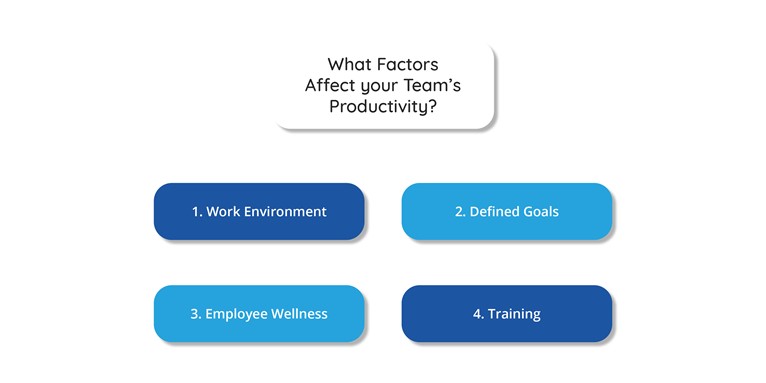
The Importance of Employee Productivity
Your employees are an integral part of your business, therefore each team member should be contributing to overall success by adding value to their roles.
Employee productivity is essential to ensure the success of any business. It’s useless to have the best professionals working for your company if you're not able to manage them correctly and maximise their working performance.
What Causes Low Productivity
If you’ve identified there’s a problem with productivity in the workplace, the first step is to understand how productivity can be affected. There are factors that affect productivity that are out of your control. But for the factors that you can control, you must analyse the situation and figure out how to resolve the issues.
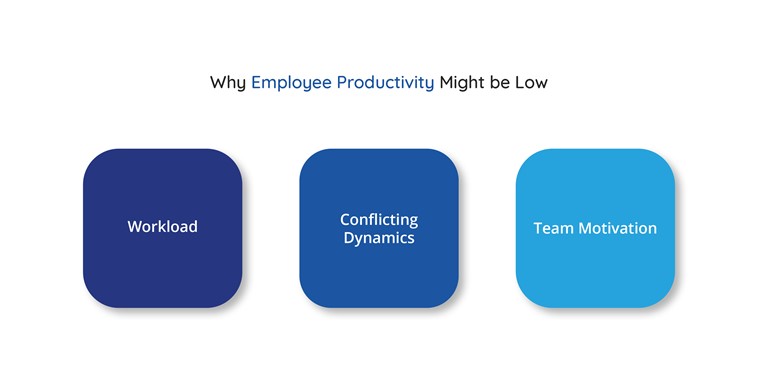
Workload
Employee productivity may be lacking because the workload you are giving your employees is either too low or too high. High workloads can put a real strain on mental health and lead to burnout. We found that on average 33% of workers said that expectations in their role contributed to stress. On the other hand, low workloads can cause boredom and lack of motivation.
Sit down with your employees and discuss workload regularly so you can adjust accordingly. Make use of document management apps that can be integrated into your company intranet platform, like Monday.com and Trello to create a clear structure of tasks and aid productivity.
Conflicting Dynamics
Let’s face the facts, in any business, there'll be disagreements. But when that conflict grows and becomes so bad that your employees aren’t working well together, it’s time to step in.
Conflict in the workplace can be damaging to employee productivity as it lowers morale and can negatively impact mental health. If you sense that an issue is arising in the workplace try and nip it in the bud as quickly as possible; take all employees aside to work out their difference and come up with a solution to the problem.
Team Motivation
Low morale and motivation is a silent killer in the workplace, impacting employee’s and whole teams performance. Your employees might be lacking in motivation if you see a change in attitude, lack of initiative and poor performance. If you notice any of these factors , you need to ensure that you tackle them straight away to improve employee productivity.
How to Improve Employee Productivity: Our Top 10 Tips
Once you’ve identified why your workforce productivity levels may be low, the next step is to think about a solution to the problem. Oak’s Mental Health Report found that almost a fifth of those who suffer health issues at work do because of burnout. In fact, burnout is a huge factor that affects employee productivity levels and it's certainly something that can be tackled head-on. We’ve put together 10 top tips on how to boost productivity levels in the workplace, with a mix of short and long term approaches.
1. Improve Employee Onboarding
Many employers still have the mindset that once a contract is signed, they're guaranteed the loyalty of their new employees. This traditional working mentality no longer applies to talent of the new generation. It requires an effective onboarding program to successfully integrate them into the company culture.
Glassdoor found that organisations with a strong onboarding process improve new hire retention by a whopping 82%. The basic elements of effective onboarding consist of extensive training, feedback, check-ins and hands-on support. As well as this, it’s important for a company intranet to make it quick and easy for employees to learn as much about their colleagues as possible.
2. Stop Micromanaging
Many leaders think that micromanaging and delegating tasks to employees is the key to enhancing productivity but in reality, this couldn’t be further from the truth. Employee empowerment is where a business places trust in its employees to control their own tasks and day-to-day activities in the workplace.
Although many businesses may be terrified at the thought of leaving their employees to manage their own tasks, empowered employees are more likely to be productive and 23% are more likely to offer ideas and solutions to their team.
3. Encourage Flexible Working and Time Off
As flexible working patterns arise, more companies should be open to the opportunity of agile working. This gives your employees the flexibility in when, where and how you work, to suit their needs and have a more structured work/life balance to increase employee wellbeing. An agile workplace empowers your team to take ownership of projects, manage their own time, and work according to their strengths. A report by academics at Cardiff and Southampton universities suggested the majority of people working from home are as productive, if not more.
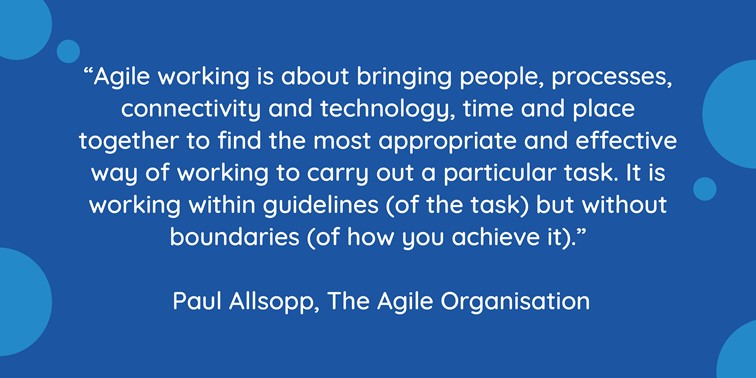
Encouraging your employees to take time off will ultimately increase your whole workforce productivity. If your people are spending hours on end working and not giving themselves a break, their capacity to focus and quality of work will be affected. This is not a productive work style for your business.
4. Hire People, Not CV’s
It can be easy to get caught up in an outdated and traditional hiring process where good education, relevant job experience and the right skills sets is all you look for. However, there is another criteria that’s equally as important, if not more. Culture fit.
Hiring for a culture fit is about bringing employees into the company whose beliefs, behaviour, and values align with your organisation. Communicating your company's culture from the start helps a candidate understand what they can expect as an employee, so they can make an informed decision on whether to accept the job offer. If this isn't discussed and culture fit isn't a part of your hiring strategy, employees are more likely to leave the company or be quite unproductive, causing conflict in the workplace.
5. Encourage Team Collaboration
Higher levels of innovation lead to increased productivity and business growth. Employees who work for collaborative companies are 22% more likely to believe that their employer cares about their morale. As a result, implementing a digital, collaborative workplace is vital for any company looking to fully collaborate their workforce.
Having a mobile app for your company intranet is also a good way of sharing company news with social feeds and timeline features - it enables your organisation to implement changes or gather valuable employee feedback, ultimately improving workforce productivity.
6. Champion Team Communication
All leaders know that clear communication is the key to success. An article by Smarp found that 72% of employees don’t fully understand their company’s strategy, making them feel out of the loop of important company information and disconnected from their organisation.
Having an intranet that offers features such as timelines, employee profiles and instant messenger means that employees can easily stay updated with company news and communicate with others instantly.
7. Focus on Employee Training
Your employee’s training plays a huge role in how prepared your team is for their job. The more prepared they are - the more productive they are likely to be. The training needs to allow employees to become familiar with their new company a lot quicker than if they were just researching it themselves. For example, companies may have their own internal tools, so training will be vital for employees to get to grips with the specific resources.
A report completed by Gallup states that 88% of employees think their employer did a poor job with the onboarding and training process. Not putting enough focus on training and onboarding can lead to an increase in employee turnover and loss of productivity.
8. Ask for Feedback
Employee feedback is vital for management to improve on their internal comms strategy, communication and more. Therefore having a survey that employees can fill out on your company intranet is vital. Leadership is able to get the feedback it needs in a concise and collaborative way.
9. Be Appreciative
Recognition is a key motivator for employees and provides them with a sense of accomplishment and makes them feel valued for their hard work and efforts. Not only does appreciation make employees feel more confident in themselves, but it also improves productivity in the workplace.
When an employee receives praise for hard work, it reinforces their behaviour and makes them more likely to continue that behaviour. The statistics of employee appreciation speak for themselves; 72% of employees said that they would work harder if they were appreciated.
10. Value Transparency
As a leader, it’s important to be clear and concise with your employees when it comes to delegating tasks. If you have a big project coming up, make sure you outline the ‘SMART’ objectives of the task to your employees; this way they will be aware of what the task entails, what is expected of them and how they can measure their success.
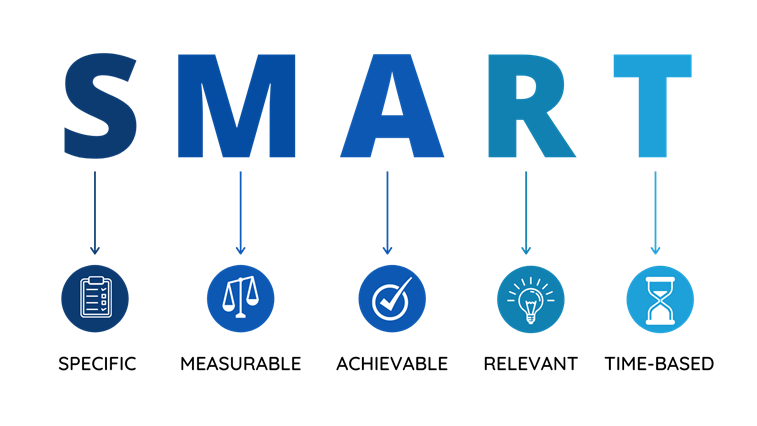 Without giving a set of objectives behind a task your employees will most likely question the validity of the task which could damage employee productivity.
Without giving a set of objectives behind a task your employees will most likely question the validity of the task which could damage employee productivity.
How to Provide your Employees With the Right Tools
It’s essential that you’re providing your employees with the right tools in your company intranet to increase overall productivity. You don't want your workforce to be endlessly searching for the right tools or features which will hinder their productivity and cause them to lose focus.
Here are our top features in Oak that we would recommend to implement into your intranet to improve productivity:
Mobile App
A digital workplace should allow your employees to access any company information and have the ability to collaboratively share important documents with colleagues at any time.
Oak’s mobile app gives all employees an enjoyable experience and allows them to access their company intranet wherever they are. Deskless, remote workers, in office - it gives companies the power to access their intranet solution at any time, from anywhere.
Curated Content
Curated content is a great tool that uses artificial intelligence to personalise content feeds for your employees so they get all the information they need, and want. Employees receiving targeted and relevant information means they have all the tools and information they need to do their job efficiently and noise is significantly reduced.
Surveys for Feedback
Pulse Surveys in Oak are used to gather real, actionable insights that businesses can use to improve employee engagement, productivity, collaboration and enhance employee experience.
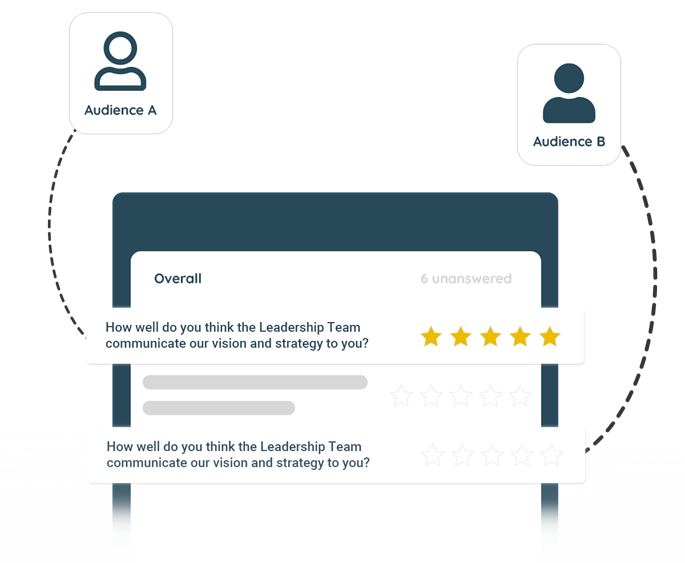
Pulse Surveys allow businesses to understand their employees, gather feedback and more. They are a hugely versatile tool that bring you valuable data from employees, all within the company intranet.
Employee Recognition Software
Employee appreciation plays a key role in an intranet and can be sent by all members of an organisation. Oak’s employee recognition software lets you shout about employees achievements big and small. This creates a positive working environment, which will in turn, improve employee wellbeing and increase collaboration and productivity.
Methods to Measure Productivity
Now that we've established how to improve productivity, it's important to understand how to measure it effectively. You can measure productivity by:
- Measuring the amount of goals met
- Amount of profit
- Amount of work completed
- Quality of work completed
- Amount of time spent on a task
All of these methods are vital to ensuring that your workforce productivity is kept to the highest standard.
There’s no doubt that many businesses may be experiencing an employee productivity slump, but this phase doesn’t have to be permanent. Once you’ve established the root cause for the lack of productivity in the workplace, ensure you take the appropriate steps to tackle the problem and bring in the right solution for your employees. Get in touch to see how Oak Engage could work for you.




